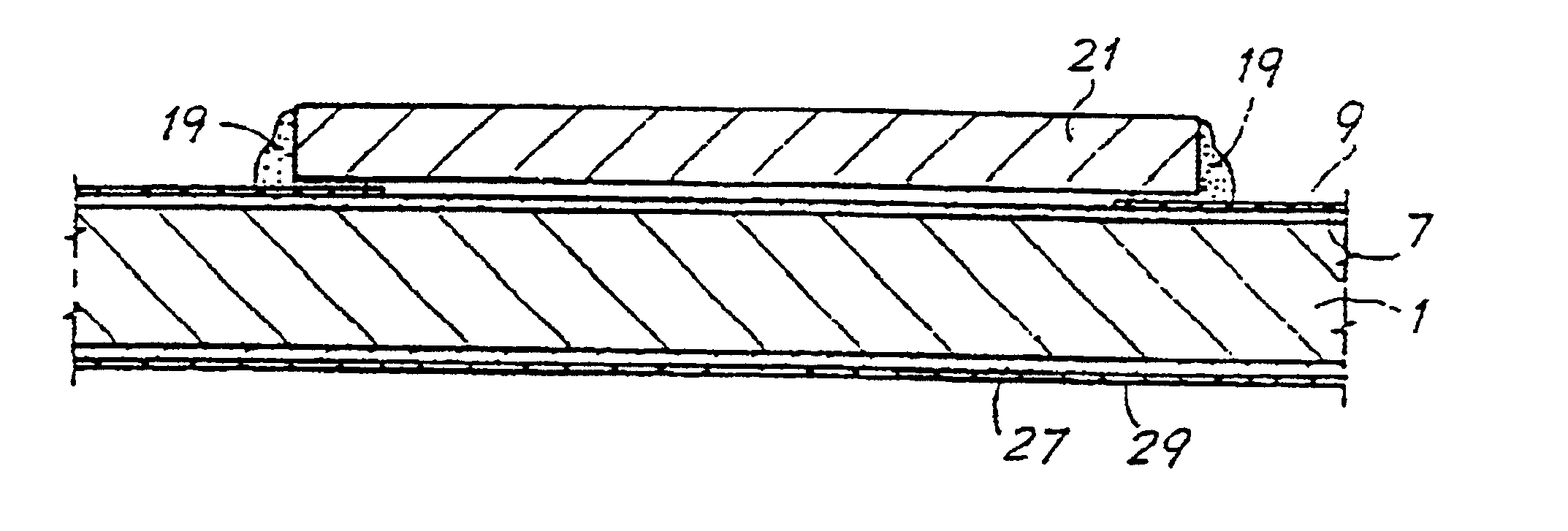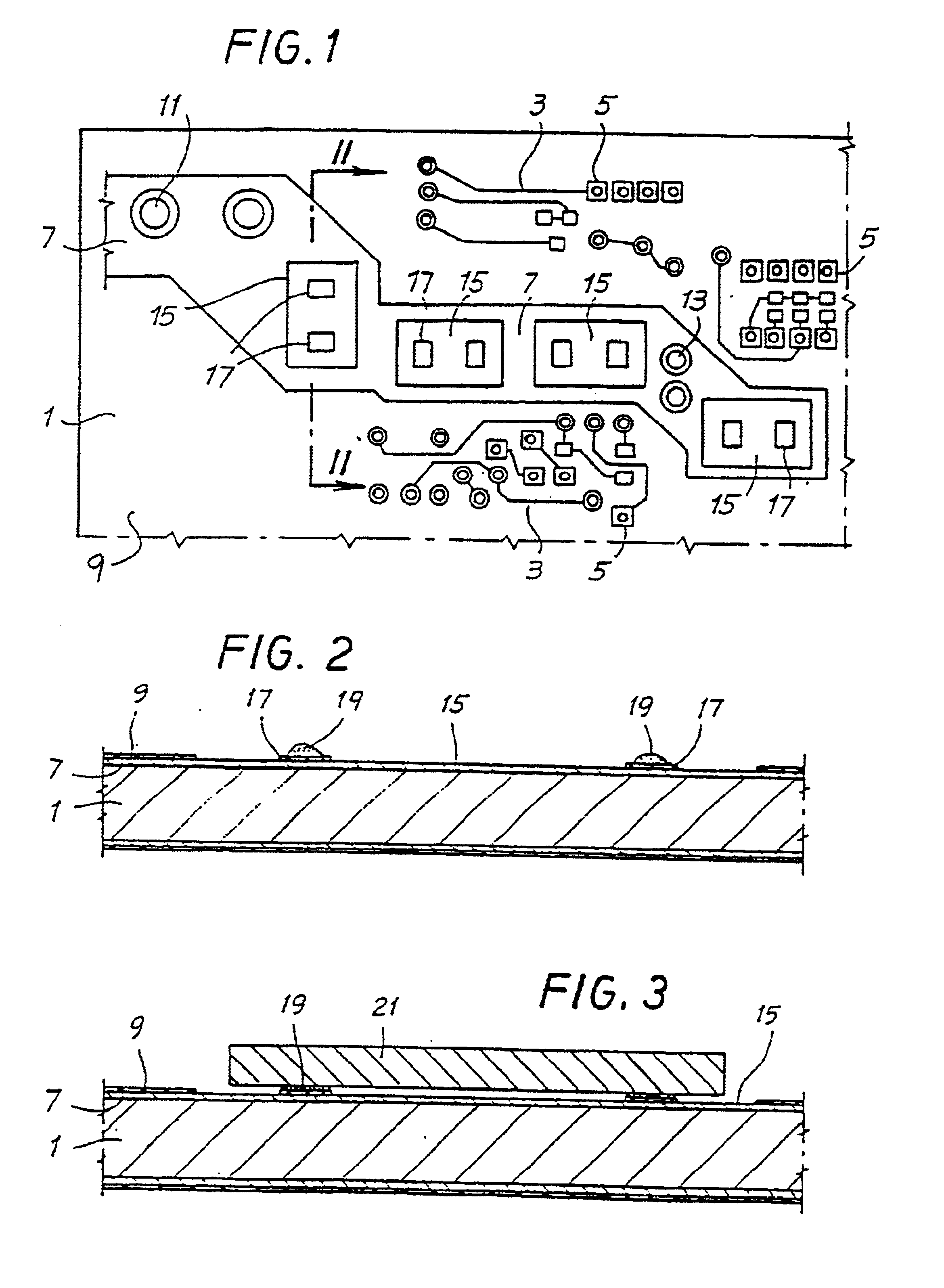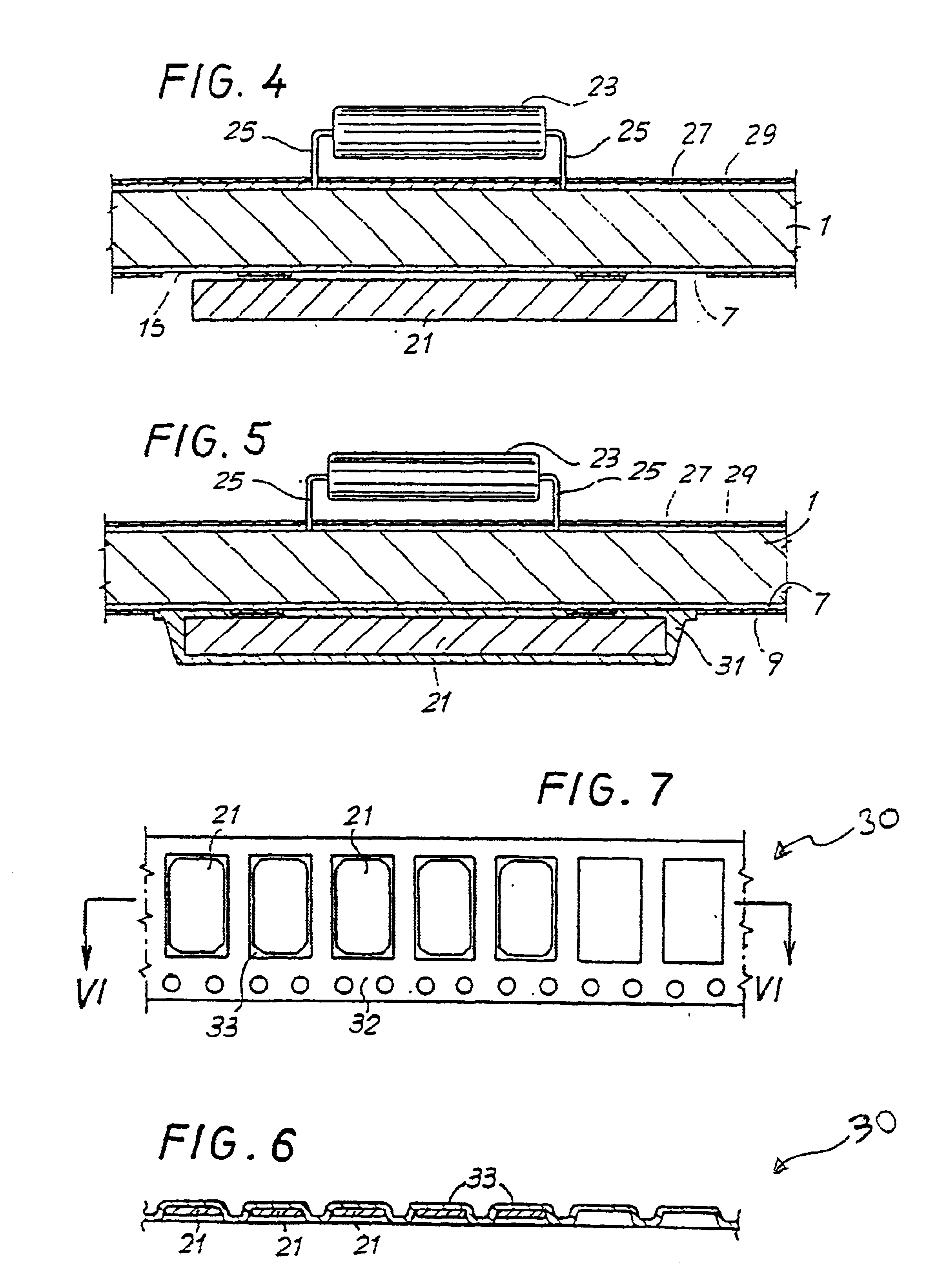Process for producing printed circuits and printed circuits thus obtained
a technology of printed circuits and printed circuits, which is applied in the direction of resist details, final product manufacturing, and high current circuit adaptations, etc., can solve the problems of inability to increase the transverse cross-sectional dimensions of the track, the application of these auxiliary conductive strips currently requires a lot of manual labor, and the design can offer sufficient resistance. , to achieve the effect of more economical
- Summary
- Abstract
- Description
- Claims
- Application Information
AI Technical Summary
Benefits of technology
Problems solved by technology
Method used
Image
Examples
Embodiment Construction
FIG. 1 shows, purely as a simplified example, a portion of laminar support board 1 for making printed circuits by the process according to the invention. The laminar support 1 includes electrically conductive tracks 3 and 7 and lands 5. The tracks 3 and 7 can be constructed as small tracks 3 or large tracks 7. The laminar support 1 also includes holes 11 and 13 for mounting electronic components and may be covered by a layer of solder-resist 9. As shown in FIG. 1, the tracks 3 and 7 may include uncovered zones 15 as locations without the layer of the solder resist 9. For one method of the present invention, these zones 15 will include areas 17 which are shown as solder-resist islands 17.
FIG. 2 shows a greatly magnified transverse cross-section on II—II of FIG. 1 of the portion of laminar support 1 of FIG. 1. The arrangement of the conductive tracks 3 and 7, of the holes 11 and 13 and of the lands 5 for applying the SMD components is purely random and merely has the objective of faci...
PUM
| Property | Measurement | Unit |
|---|---|---|
| thickness | aaaaa | aaaaa |
| conductive | aaaaa | aaaaa |
| electrical conductivity | aaaaa | aaaaa |
Abstract
Description
Claims
Application Information
 Login to View More
Login to View More - R&D
- Intellectual Property
- Life Sciences
- Materials
- Tech Scout
- Unparalleled Data Quality
- Higher Quality Content
- 60% Fewer Hallucinations
Browse by: Latest US Patents, China's latest patents, Technical Efficacy Thesaurus, Application Domain, Technology Topic, Popular Technical Reports.
© 2025 PatSnap. All rights reserved.Legal|Privacy policy|Modern Slavery Act Transparency Statement|Sitemap|About US| Contact US: help@patsnap.com



